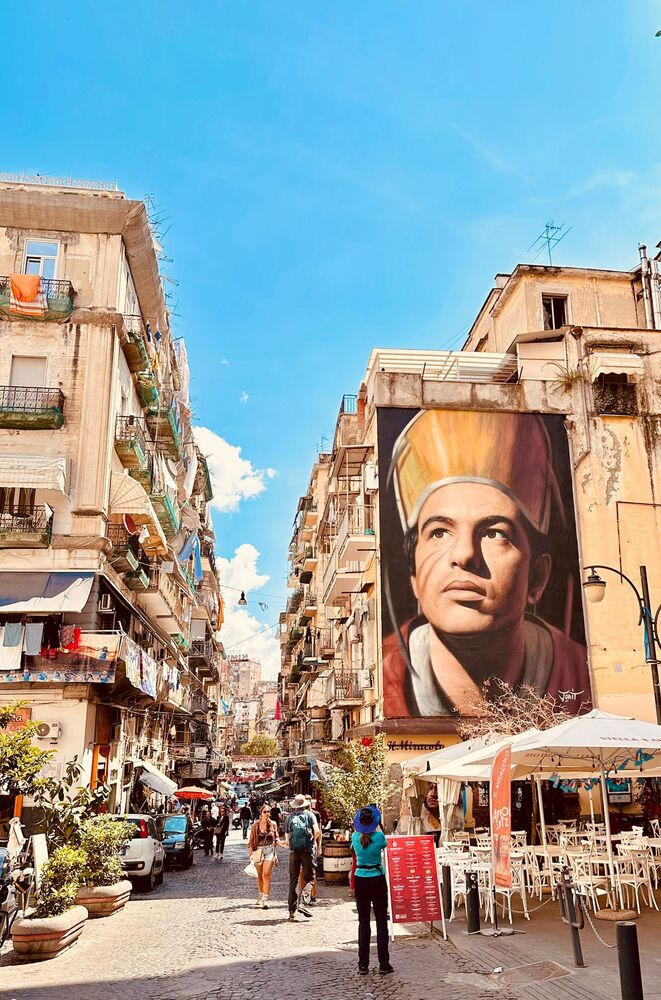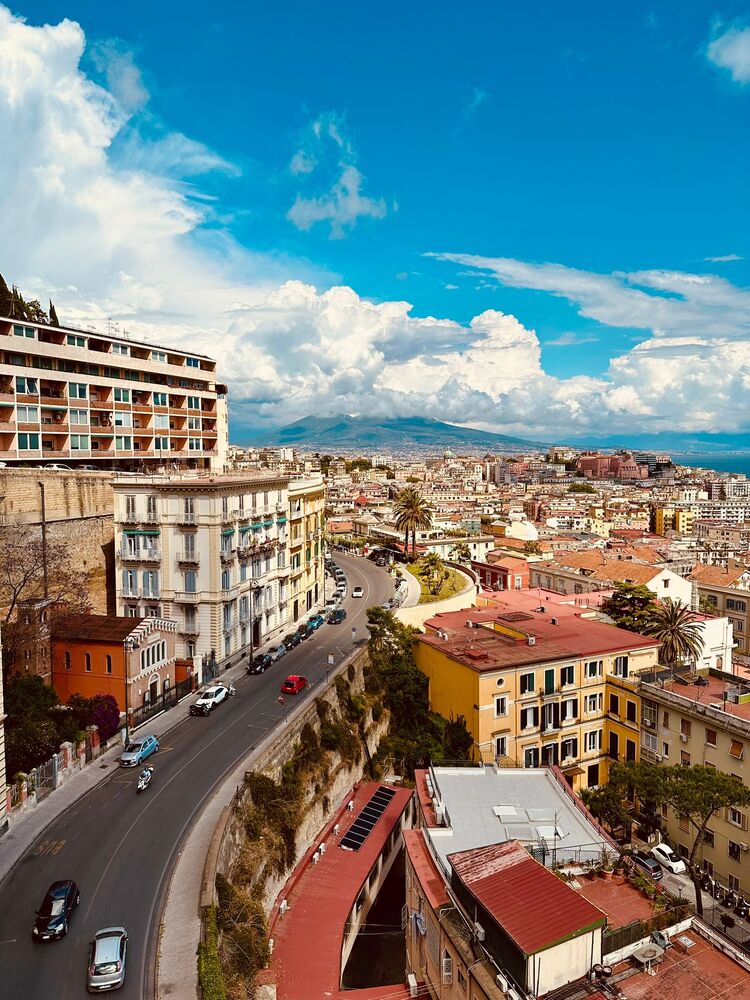Article content
27 May 2025 by Matthew Grubb
Naples is a city that often flies under the radar compared to its glamorous neighbours along the Amalfi Coast. Yet, this vibrant city, with its deep-rooted history stretching back over 2,800 years, offers travellers an authentic and captivating Italian experience unlike any other. Rich in culture, art, and a unique culinary scene, Naples remains one of Italy’s most underrated gems – full of surprises for those willing to look beyond the usual tourist trails, whether it’s to start a trip to the Amalfi coast in style, or to simply use a fascinating city as a base to explore some of Italy’s richest history and scenery.

Mural of San Gennaro – Naples’ beloved saint (Photo by Rui Ribeiro)
Historic struggles with reputation
For years British tourists had been deterred by the mixed reputation about Naples. However, recent years have seen a big turnaround. Increased tourism, improved city services, more positive reviews from travellers and a growing appreciation for Naples’ authenticity have helped erase many of these outdated stereotypes. Now, more visitors recognise Naples as a vibrant, fascinating and deeply rewarding destination that offers something truly special – away from the more polished and picturesque towns along the Amalfi Coast. All this means that now is as good a time as ever to visit Naples.

A classic Vespa – a common sight in the streets of Naples (Photo by Rui Ribeiro)
Italy’s third largest city has been won and lost by many regimes and empires over the last 1600 years, and this has led to an enchanting tapestry of influences that is clear to see across its many neighbourhoods. Its historical centre is brimming in eye-catching baroque designs and occasional hints of Islamic architectural styles, while the affluent Chiaia district shows not only a modern renaissance in the city, but also several reminders of the city’s Spanish rulers from the 16th and 17th centuries, through its architecture and layout.

The Chaia District boasts an array of upscale bars, luxury boutiques and stylish eateries (Photo by Rui Ribeiro)
Why choose Naples?
Figuratively and literally, mount Vesuvius overlooks the city. Popular excursions to the volcano and the fertile wine region nearby – as well as the ancient towns it destroyed at Pompeii and Herculaneum – are a driving factor behind the region’s tourism, but a stay in Naples allows a more convenient base for these trips.
The volcano’s close situation to the sea allows for some jaw dropping views that are appropriate for any special occasion, and there can be none better than those from the luxurious Grand Hotel Parker’s. From its front facing rooms and its restaurants and rooftop bar, guests can look out past the city and the mountain and across the bay as far as Capri. But perhaps what makes the hotel even more special is the exceptional service the moment guests enter its museum-like lobby, overflowing with artworks and sculptures and neatly accompanied by marble flooring and Murano glass chandeliers. Its owner Giovanni greets guests individually to wish and ensure them a memorable stay, which is also enabled by its superb choice of spacious rooms and suites. One of its restaurants has a Michelin star too.
Better yet, Naples is less than 70 minutes by train from Rome, making it easy to combine the two cities for a multi-centre trip, or even a day excursion. The stark contrast between them offers a vivid snapshot of Italy’s astonishing diversity, and a deeper appreciation for what makes the country such a compelling place to explore.

The views from the rooftop bar at Grand Hotel Parker's are stunning (Photo by Rui Ribeiro)
Chaos, culture & charisma
I found that one of Naples’ greatest charms lies in how effortlessly you can become immersed in the rhythm of its everyday life. There’s something deeply endearing about the city’s chaotic harmony, where passion is worn on every sleeve and life unfolds on the streets. Much has been said about the ever-present shadow of Vesuvius, but even more inescapable is the city's fervent devotion to Napoli Football Club, and to its most revered icon, ‘Il Dio’, Diego Maradona

One of the city's many murals of Diego Maradona – a football icon (Photo by Rui Ribeiro)
But, to mention Maradona is not just to reference a sports hero, but to touch on the soul of the city itself. His story of rising from poverty in the slums of Buenos Aires to global superstardom mirrors the dreams and struggles of many ordinary Neapolitans. And, in a city often overlooked or underestimated, Maradona's triumphs with Napoli in the 1980s were not just sporting victories, they were symbolic acts of defiance and hope. His grit, brilliance and rebellious spirit aligned perfectly with a city that has always fought to define itself on its own terms. The deep emotional connection between Maradona and Naples is visible on every street corner: from shrines and murals to café conversations and chants echoing from balconies.
While Vesuvius, the bay, and the attraction of everything the Amalfi coast has to offer are more than enough reason to visit, it is this unfiltered intensity and unparalleled atmosphere that sets the city apart and makes Naples itself such a must-see city.






